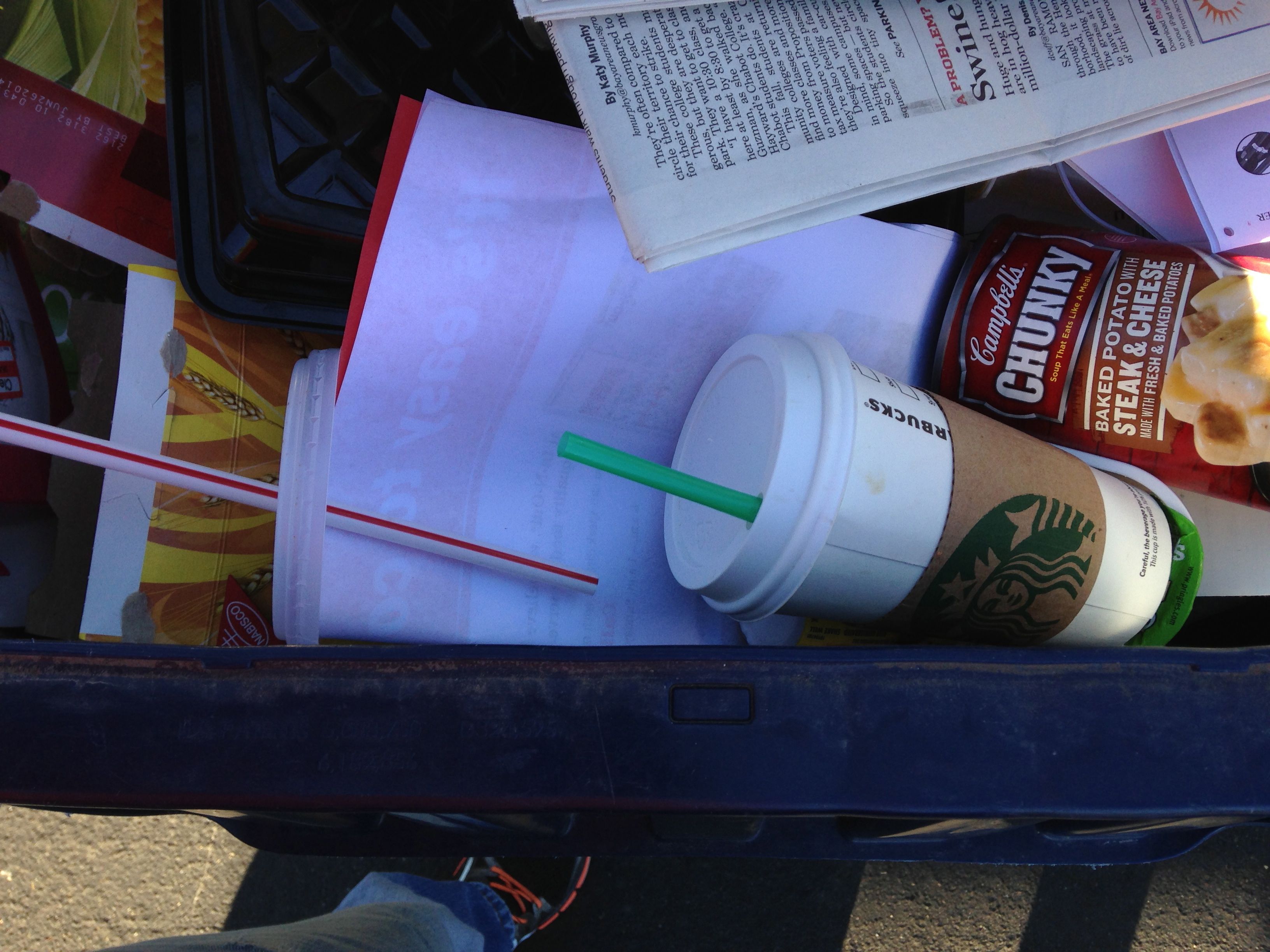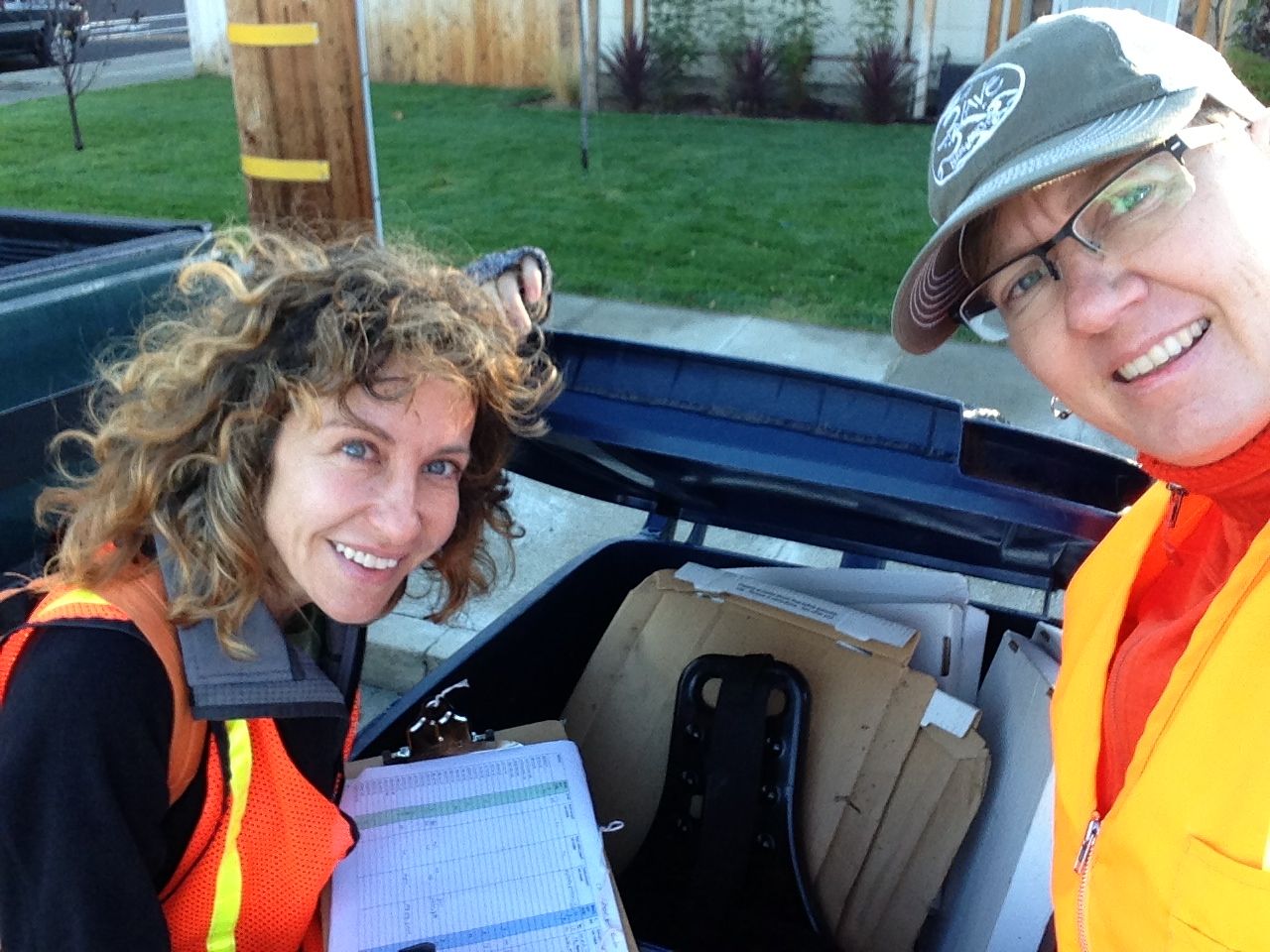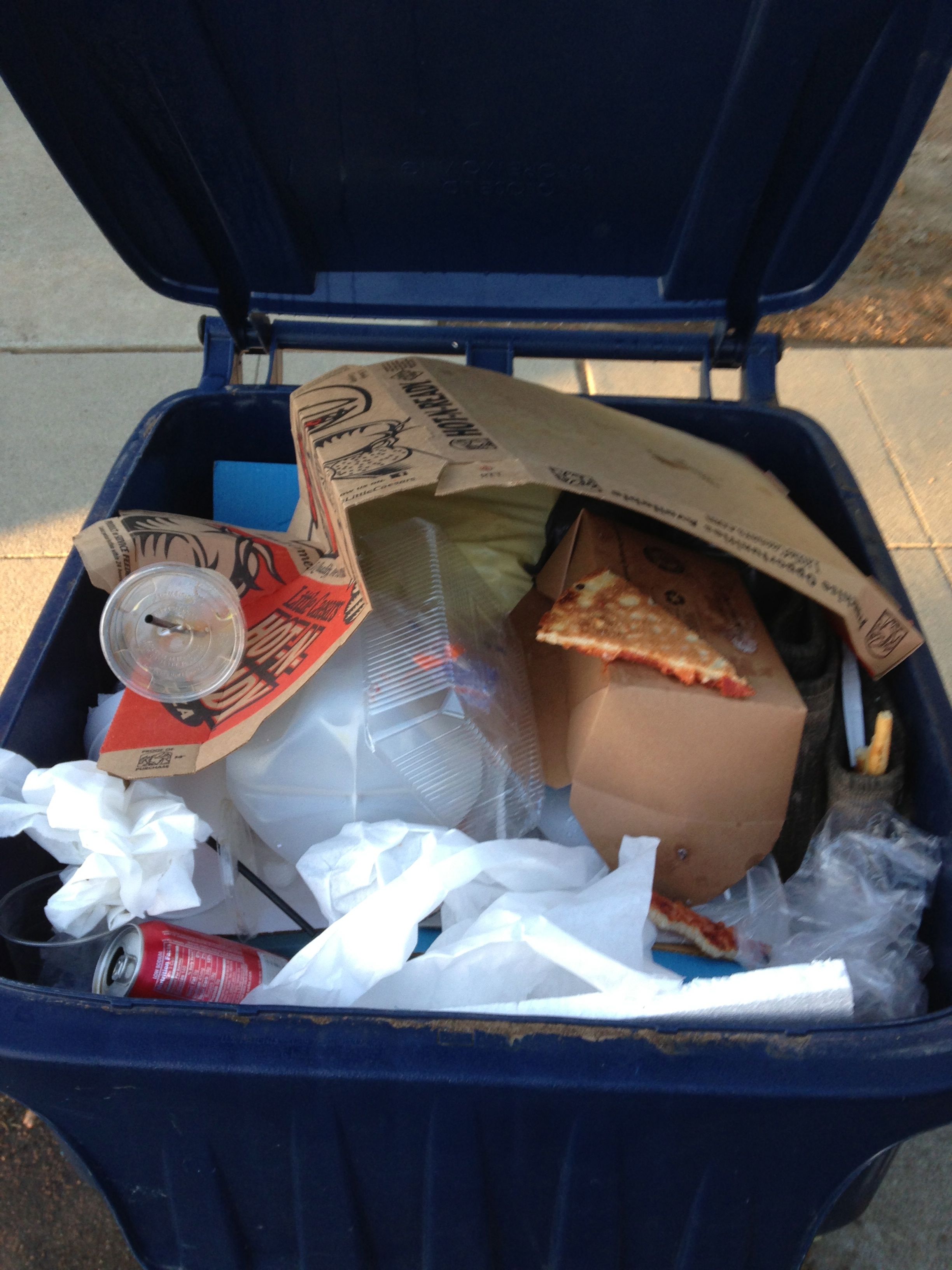Recycling Spot Checks: Flipping Lids in Livermore
POSTED ON November 4th, 2013 BY Kas NetelerDuring the last week of September, my colleague Stefanie Pruegel (pictured left) and I (pictured right) donned orange safety vests and set out before sunrise to study recycling program participation in various neighborhoods in Livermore, California. Armed with headlamps, clipboards and maps, we walked some 20 miles over five days and flipped about 2,000 recycling and organics cart lids.
This walkabout was part of our observational research to gain insights into residents’ recycling and composting habits, including contamination patterns (i.e., putting things in the wrong carts). The data we gathered will also measure the baseline participation rate. Repeating this measurement after an outreach campaign will allow us to compare the results and determine how successful we were as well as guide the next phase of outreach. This particular kind of measurement can be a messy job, but someone’s gotta do it.
During our lid-flipping adventures, several patterns emerged:
• Livermore loves pizza and is confused about leftovers. In Livermore, the proper process is to chuck pizza boxes and leftovers into the Organics (compost) cart. Pizza boxes are considered food-soiled paper (as are most fast food paper wrappers), and pizza crusts are considered food scraps – all of which goes into Organics. However, we found households were evenly split over whether to put the box in Recycling or Organics.
• Livermore is a thirsty bunch, and cup sorting is a challenge. What is the preferred destination for takeout cups, lids and straws? These items are made of both plastic and paper, and each needs to be handled  differently. This leads to a lot of consumer confusion. We found that no matter if the cups were for cold drinks (plastic) or hot drinks, (paper) the majority ended up in the recycling cart, along with their lids and straws. But, the lids and straws actually go into the garbage, and the paper cups go in the organics. This kind of contamination adds considerable expense for waste haulers and ultimately can drive up trash rates. (Please Note: This is a general observation and not a prediction for Livermore.)
differently. This leads to a lot of consumer confusion. We found that no matter if the cups were for cold drinks (plastic) or hot drinks, (paper) the majority ended up in the recycling cart, along with their lids and straws. But, the lids and straws actually go into the garbage, and the paper cups go in the organics. This kind of contamination adds considerable expense for waste haulers and ultimately can drive up trash rates. (Please Note: This is a general observation and not a prediction for Livermore.)
• Livermore has beautiful yards, and sorting the waste is a conundrum. Throughout the week we “ooh-ed” and “ah-ed” at the beautiful yards and landscaping in the neighborhoods we saw. However, many residents seemed to assume that anything from the yard belongs in the Organics cart. In fact, certain items like pet waste belongs in Garbage, not Organics. Putting whatever blows (or gets pooped) in people’s yards into the Organics cart causes another costly contamination headache.
We saw some clear consistencies in what was going right and wrong in the carts. Next we will tabulate our findings, design an outreach campaign to focus on the most prevalent behaviors that need to change, and afterwards, check those carts again. We look forward to helping the city and the citizens of Livermore “sort out” any issues and move forward with their waste reduction goals.

